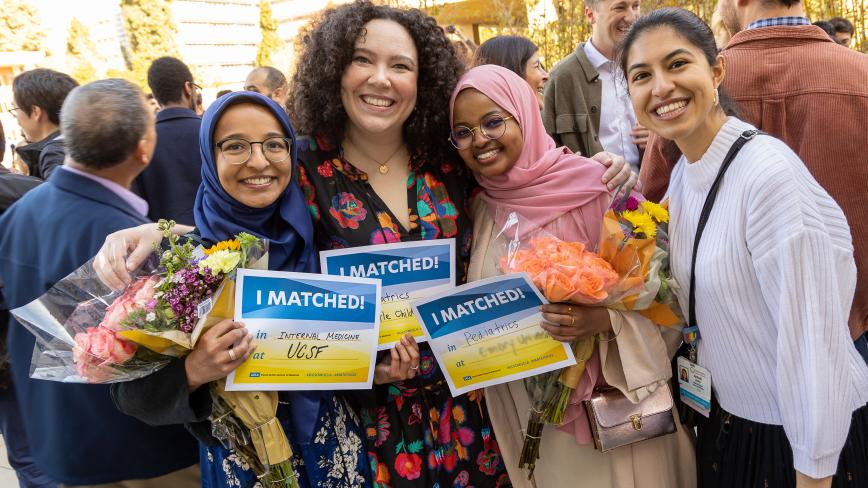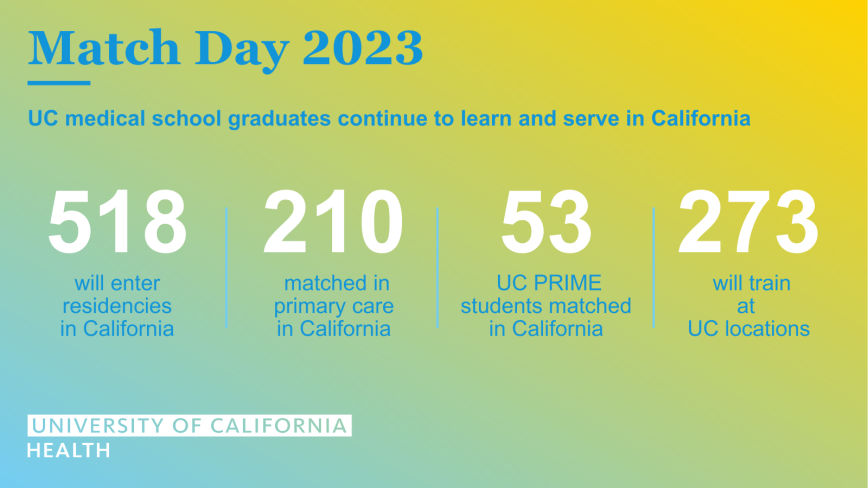On Match Day, 743 University of California medical students learned their residency assignments, and 70 percent of those new doctors will serve California patients, including some of the most vulnerable and under-resourced populations in the state.
Medical students nationwide found out on March 17 where they will learn and practice for the next three to seven years. Match Day culminates a months-long interview and application process, and every year, students gather with family and friends to find out the next chapter in their journey to becoming a licensed medical doctor. In the next phase of their professional training, UC medical school graduates will pursue clinical experience, with 41 percent focusing in primary care.
Historically, about three in four medical students who complete their residency in California also stay and practice in the state. California leads the nation in retention of medical school graduates, and current data from Association of American Medical Colleges show that 77 percent of residents who completed their training in California from 2012 through 2021 are practicing in the state.
The future physicians graduating from medical schools on six UC campuses—UC Davis, UC Irvine, UC Riverside, UCLA, UC San Diego and UCSF—include more than 70 students participating in Match Day who have completed the UC Program in Medical Education (UC PRIME). UC PRIME prepares physicians to serve California’s most under-resourced populations. Seventy-five percent of this year’s UC PRIME matching graduates will train in California hospitals.
“The medical school Class of 2023 across our six academic health centers earned their degrees at a time when COVID-19 underscored health inequities across our state,” said Carrie L. Byington, M.D., executive vice president of University of California Health. “These new physicians have a unique perspective and a commitment to ending health disparities. I am confident that they will find innovative ways to serve the most diverse patient population in the nation, and I am gratified that so many will enter residency programs in California.”
UC PRIME programming at each campus targets a specific community’s needs, from improving rural access to medical care, to serving African, Black and Caribbean, Indigenous, Latino or urban homeless populations. At UC Riverside School of Medicine, where the UC PRIME program has just enrolled its second class, students are trained to work in the Inland Empire, where there are just 35 physicians per 100,000 people, and poor health outcomes compared to other regions in the state.
UC medical students not only witnessed the disparities in care brought to light by COVID-19, but they also pursued their studies and clinical rotations under pandemic restrictions that transformed aspects of medicine, from the emergence of new clinical protocols to the wider use of telemedicine.
Thirty-seven percent of UC medical students this year matched at UC locations. UC-sponsored residency and affiliated family medicine programs provide nearly half of the residency training positions in the state.


